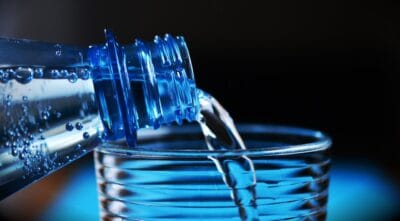Access to clean and safe drinking water is vital for maintaining health and overall well-being. Many households may unknowingly consume water that contains various contaminants and impurities. It’s crucial to understand the common types of water contaminants and how a water filtration system can effectively address them to ensure the quality and safety of drinking water.
This article will explore the different categories of water contaminants, their sources, and the effectiveness of filtration systems in removing them.
Microorganisms
Microorganisms such as bacteria, viruses, and protozoa are common water contaminants that can cause gastrointestinal illnesses and other health problems if ingested. These microorganisms can enter water sources through sewage overflows, animal waste, and untreated runoff from agricultural areas. Filtration systems like UV sterilizers, ceramic filters, and reverse osmosis membranes are effective in removing microorganisms by physically trapping or killing them.
Chemicals and Heavy Metals
Chemicals and heavy metals can leach into water sources from industrial processes, agricultural runoff, and corroded plumbing systems. Common chemical contaminants include chlorine, chloramine, pesticides, herbicides, and industrial solvents. Heavy metals such as lead, arsenic, mercury, and cadmium pose serious health risks when present in drinking water. Filtration systems like activated carbon filters, ion exchange systems, and reverse osmosis membranes can effectively remove many chemical contaminants and heavy metals through adsorption, absorption, or ion exchange processes.
Testing and Monitoring Water Quality
Testing and monitoring water quality is essential to identify contaminants and ensure the effectiveness of filtration systems. Regular water sample testing can help homeowners understand the specific contaminants present in their water and determine the appropriate filtration methods needed to address them. Factors such as pH levels, hardness, and total dissolved solids (TDS) should also be considered in addition to specific contaminants. Homeowners should perform routine water testing or enlist professional water testing laboratories to accurately assess their water quality.
Sediment and Particulate Matter
Sediment and particulate matter are common water contaminants that can cause cloudiness, discoloration, and unpleasant tastes or odors in drinking water. These contaminants can enter water sources through soil erosion, construction activities, and deteriorating infrastructure. Filtration systems such as sediment filters, ceramic filters, and multimedia filters effectively remove sediment and particulate matter by physically trapping them as water passes through the filter media.
Chlorine and Chloramine
Chlorine and chloramine are commonly used disinfectants in municipal water treatment facilities to kill bacteria and other microorganisms. While chlorine and chloramine ensure the safety of drinking water, they can impart a strong odor and taste to the water. Filtration systems like activated carbon filters and catalytic carbon filters can effectively remove chlorine and chloramine by adsorbing them onto the surface of the carbon media, resulting in improved taste and odor of the water.
Pharmaceuticals and Emerging Contaminants
Pharmaceuticals and emerging contaminants are a growing concern in drinking water supplies due to their potential health effects and environmental impact. These contaminants include prescription drugs, over-the-counter medications, personal care products, and synthetic chemicals from various industrial processes. Filtration systems like advanced oxidation processes, nanofiltration membranes, and granular activated carbon filters are effective in removing pharmaceuticals and emerging contaminants by breaking down or adsorbing them from the water.
Regulatory Standards and Guidelines
Regulatory standards and guidelines established by governmental agencies such as the Environmental Protection Agency (EPA) or the World Health Organization (WHO) for drinking water quality are crucial for public health and safety. These standards set limits for allowable levels of various contaminants in drinking water. Key regulations include the Safe Drinking Water Act (SDWA) in the United States and the European Union Drinking Water Directive (DWD) in Europe. Compliance with regulatory standards and the role of filtration systems in meeting these requirements are vital for ensuring safe drinking water.
Factors Affecting Filtration System Performance
Several factors can affect the performance of a water filtration system and its ability to effectively remove contaminants from water. These factors include flow rate, contact time, filter media quality, and system maintenance. Proper installation, regular filter replacement, and periodic system maintenance are essential for optimal filtration system performance. Homeowners should follow manufacturer guidelines for filter replacement, schedule regular maintenance checks, and monitor system performance over time to maximize efficiency and longevity.
Health Effects of Water Contaminants
Exposure to certain water contaminants such as bacteria, heavy metals, and chemical pollutants can lead to adverse health outcomes, including gastrointestinal illnesses, neurological disorders, and reproductive issues. It is essential to protect vulnerable populations such as children, pregnant women, and individuals with compromised immune systems from exposure to contaminated water. Water filtration systems play a crucial role in reducing the risk of waterborne illnesses and promoting public health and well-being.
Community and Environmental Impacts
Water contamination can harm ecosystems, wildlife, and natural habitats through pollution and habitat degradation. Contaminated water sources have social and economic consequences, including waterborne diseases, water shortages, and environmental pollution. Sustainable water management practices, pollution prevention strategies, and investment in water infrastructure are vital for safeguarding water resources for future generations. Homeowners should consider the broader environmental and societal implications of water contamination and support efforts to protect and preserve clean water sources.
Considerations for Selecting a Filtration System
Selecting the appropriate water softener system Warren depends on individual needs, water quality, and budget considerations. Factors to consider include the filtration method (e.g., activated carbon, reverse osmosis, UV sterilization), system capacity, installation requirements, and maintenance needs. Comparing different types of filtration systems, including their advantages, limitations, and suitability for addressing specific contaminants, is essential. Homeowners should research and consult with qualified professionals to identify the most suitable filtration system for their unique circumstances.
Importance of Regular Maintenance and Servicing
Regular maintenance and servicing are crucial for ensuring the effectiveness and longevity of water filtration systems. Common maintenance tasks include filter replacement, system cleaning, and monitoring for signs of wear or malfunction. Following manufacturer guidelines and scheduling routine maintenance checks prevent issues such as clogging, reduced filtration efficiency, and system failure. Homeowners should establish a maintenance schedule and adhere to best practices for maintaining their filtration systems to ensure optimal performance.
Conclusion
Water contamination is a significant concern that can impact the health and well-being of individuals and communities. Understanding the common types of water contaminants and how filtration systems can address them is essential for ensuring the quality and safety of drinking water. By investing in a whole house water filtration Erie system and implementing proper maintenance practices, homeowners can enjoy clean, safe, and great-tasting water for drinking, cooking, and other household activities.


